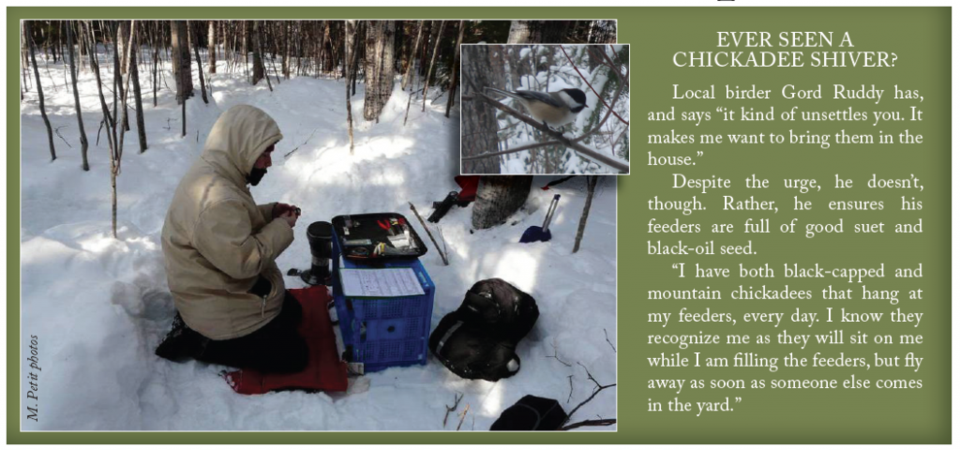 Imagine going to bed, and waking up having lost 30 per cent of your body weight. For some it may seem like an appealing weight loss plan, but for the hearty black-capped chickadee, this nightly weight loss comes from spending huge amounts of energy to stay warm during winter nights when they are unable to feed.
Imagine going to bed, and waking up having lost 30 per cent of your body weight. For some it may seem like an appealing weight loss plan, but for the hearty black-capped chickadee, this nightly weight loss comes from spending huge amounts of energy to stay warm during winter nights when they are unable to feed.
This is the research of Magali Petit, a PhD candidate at Université du Québec à Rimouski. Petit is interested in understanding the natural capacity of birds to adjust to variations in their environment—in this case, weather. She says this is the first step in being able to predict how extreme weather events, propagated by climate change, will affect chickadees and other small birds in the future.
Petit says that in the winter, a bird’s energy budget can be difficult to balance, adding that chickadees adjust to fast and short term changes in winter conditions by increasing their heat output. To afford the extra calories, they start to increase their muscle mass by the end of summer, and reach their higher muscle mass and fat reserves by the peak of winter.
“Birds produce heat by shivering, and they need muscle to do that,” says Petit. “More muscle allows them to shiver more.” She adds that fat stores provide the fuel to generate heat, and the birds also increase their cellular metabolism. “The machinery runs faster, and because they are more active, they produce more heat.”
Petit and her colleagues caught several wild chickadees and measured how much energy they were using at rest and under cold conditions. These measurements are known to be related to other physiological processes in their bodies, and based on those relationships, the researchers were able to discover that chickadees increased their basal metabolism when temperatures decreased, suggesting an enlargement in muscles and organs to sustain winter activities such as foraging and thermoregulation.
Interestingly, they found that besides muscle and organ enlargement, chickadees were also able to increase their ability to produce heat metabolically, and therefore their cold tolerance, to coincide with cold winter conditions—at least to a point.
It appears chickadees have developed more than one mechanism to survive the long winter.
So what will happen to the chickadee in an extreme weather event? “It depends on how extreme the event is, and how long it lasts,” says Petit.
“Given their ability to adjust their physiology, they should be able to survive extreme events, but probably not if it’s three or four days in a row of something like an ice storm.” She explains that ice is really dangerous for chickadees because the ice covering denies them access to their food.
“A small-bodied bird like this can only survive for maybe one day without food,” says Petit, who adds chickadees are not able to store large amounts of fat to get them through times when food is scarce.
Short winter days also mean less feeding time. To deal with this shortage in daily foraging time and colder night temperatures, chickadees go into a state of hypothermia at night, thereby decreasing the temperature gradient between their bodies and their environment.
“It’s a really delicate balance between the day and the night, the feeding and the fasting,” says Petit.
Over the next few years, she and her colleagues will try to find out if this balance is upset by extreme swings in weather from climate change.
Niki Wilson
Special to the Fitzhugh
